Can you think of a car that had a companion model that was merged into its identity? Sounds like a strange concept, but our Pick of the Day is one example we know of—do you know any others? This 1973 Plymouth Road Runner GTX is listed for sale on ClassicCars.com by a dealership in Morgantown, Pennsylvania.
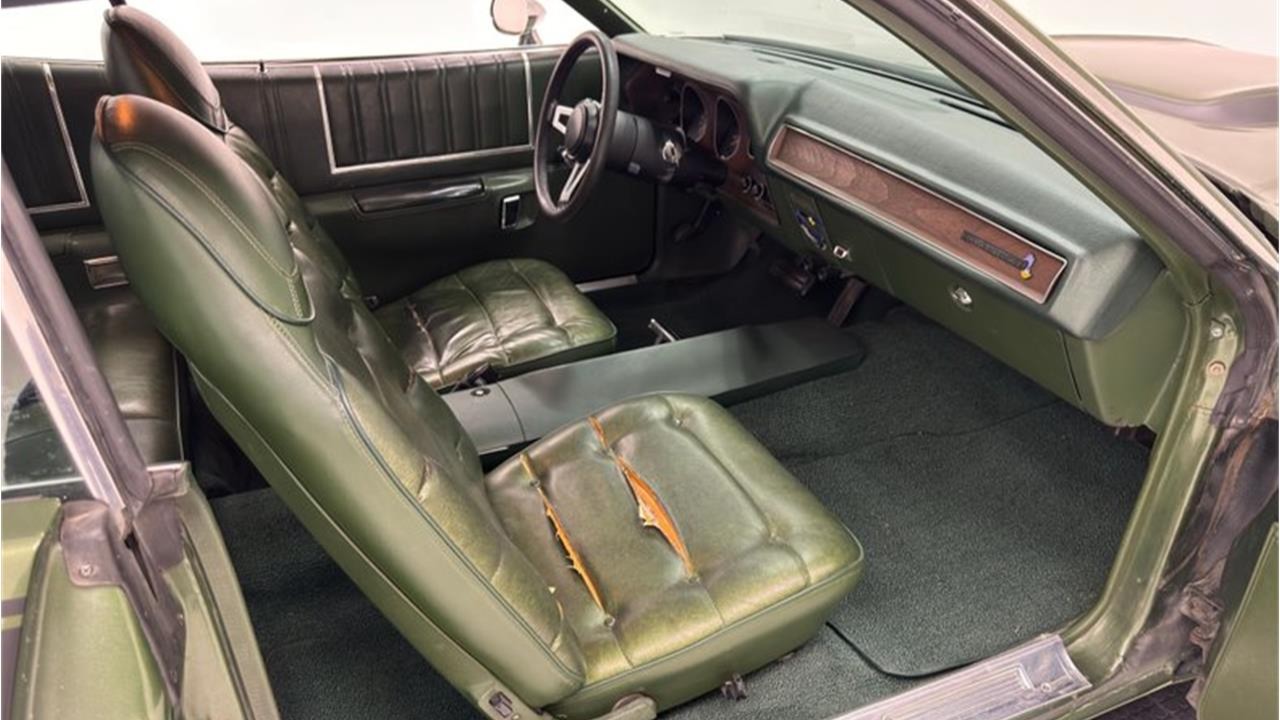
Plymouth introduced the GTX for 1967, the first of the company’s image cars—before, if you wanted to go fast in a mid-size Mopar, you had to choose a Belvedere or Satellite and pick an engine. With the GTX, it was a hot model out of the gate with no low-performance variants—finally, Plymouth figured out the GTO’s formula! Included with the GTX was a standard 375-horsepower Super Commando 440. The following model year, Plymouth introduced a companion performance model called the Road Runner. Major distinction between the two was that the GTX was based on the up-market Sport Satellite, while the Road Runner was based on the down-market Belvedere and was powered by a 383.
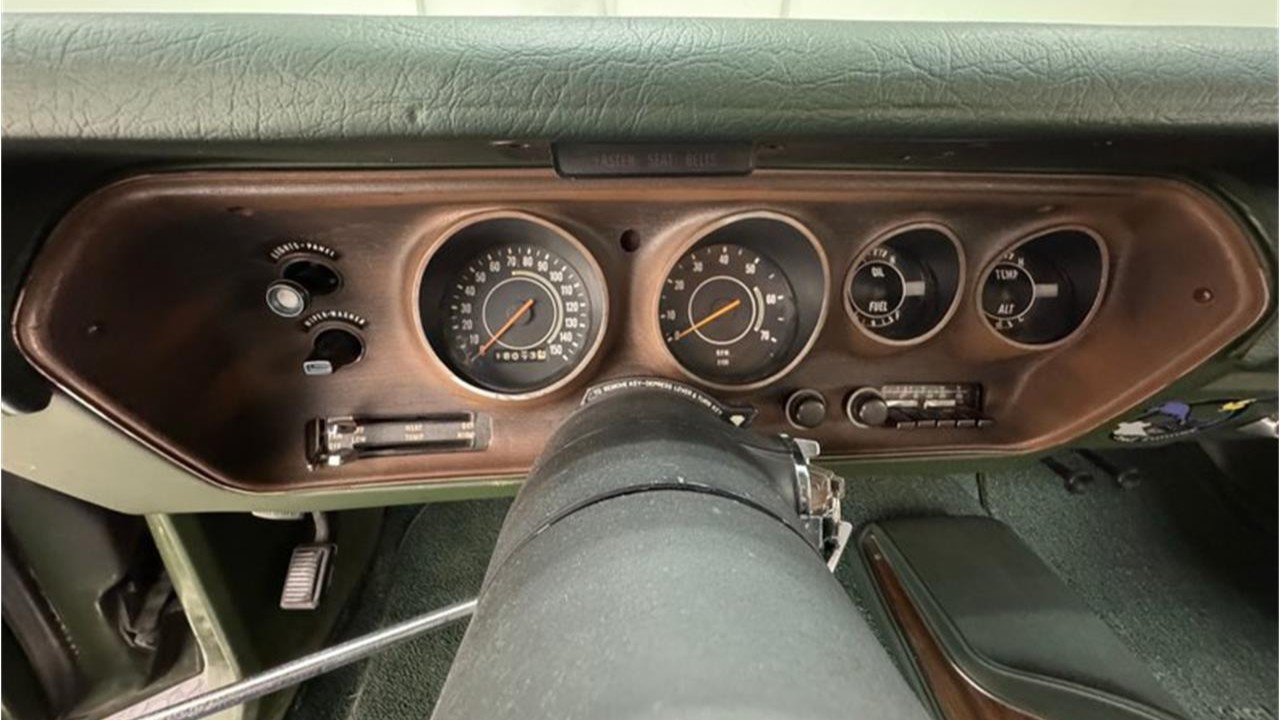
Both models continued, hand in hand, through 1971, but the segment was light-years different than three years earlier thanks to market forces that led to a decline of sales for performance and pony cars. After Plymouth produced 2,942 GTXs for 1971, the company decided to put the GTX model to rest.
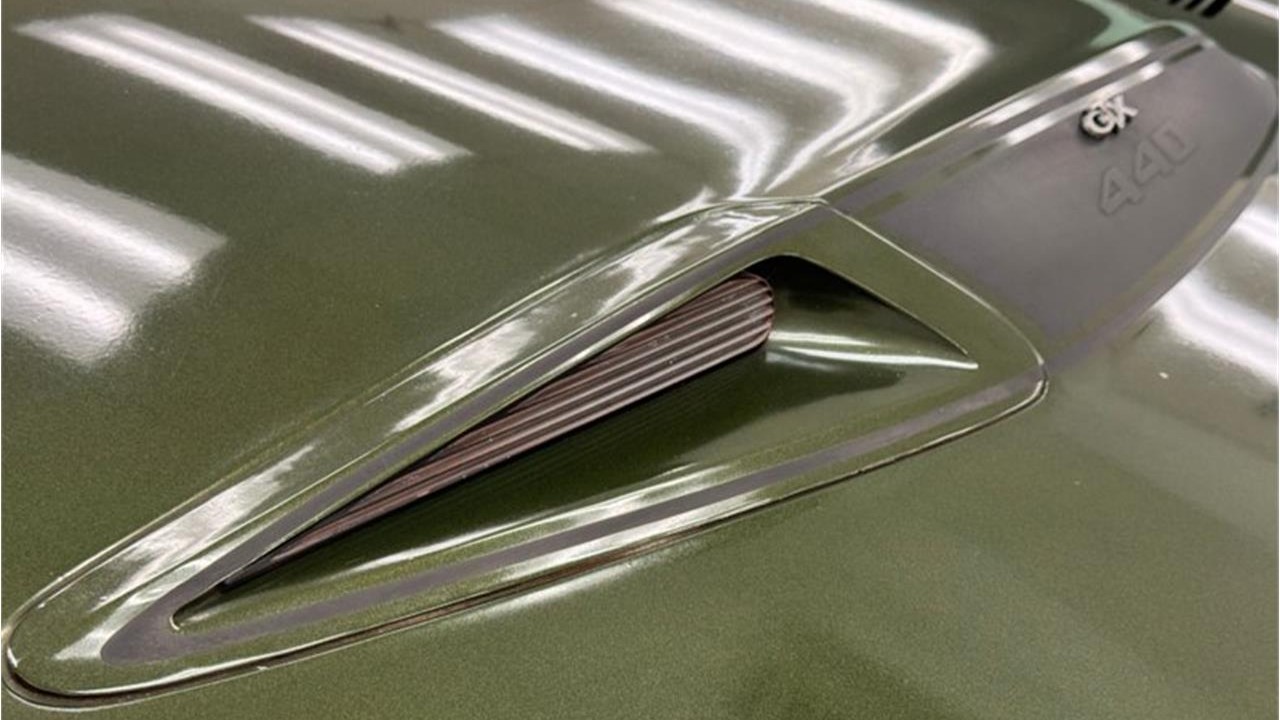
During 1968-71, Plymouth never made the Super Commando 440 available for the Road Runner (excepting the Superbird)—that was the GTX’s territory—so considering the GTX was put to rest for 1972, Plymouth made this 440 an available option for the Road Runner. Interestingly, when this engine (or the handful of 440 Six Barrels that trickled out of the factory before abruptly being cancelled) was specified, subtle GTX badges were added to the Road Runner. Nowhere in literature was it called a “Road Runner GTX,” but that’s how we tend to refer to it today. There was no “GTX package,” per se—order the 440 and you received the badges.
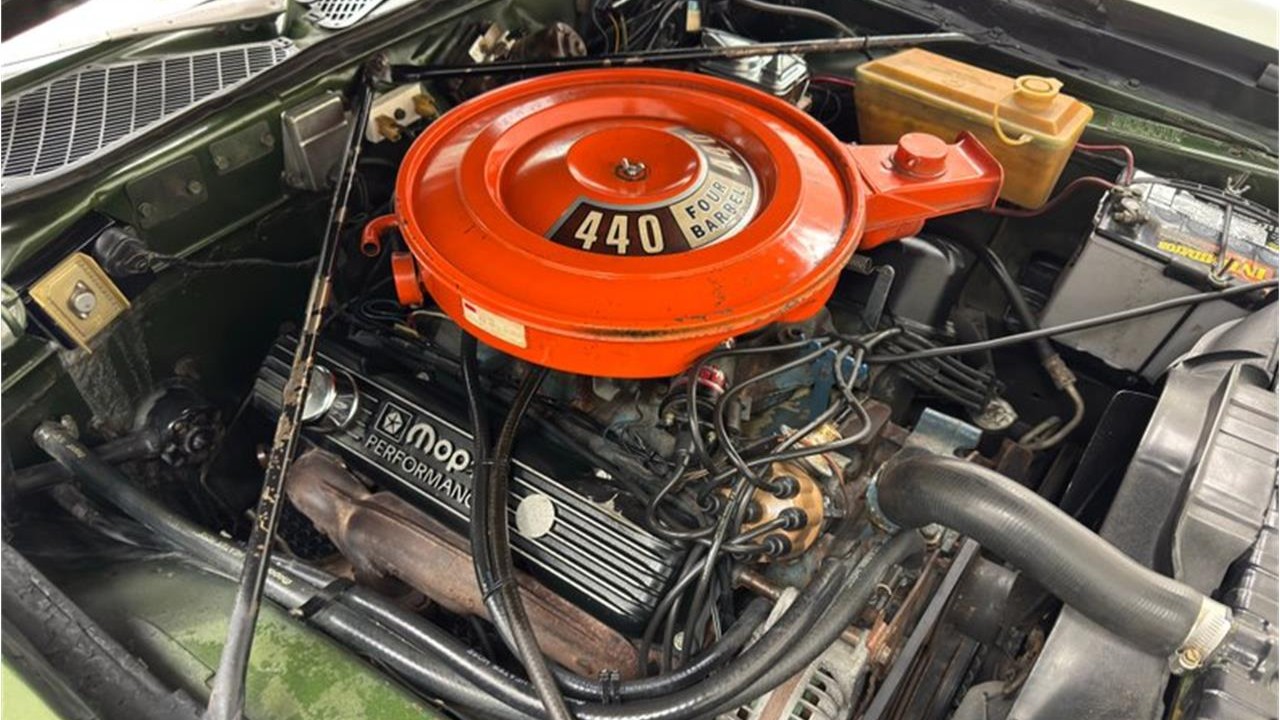
For 1973, Plymouth restyled the Satellite series, which included the Road Runner. The shape was familiar but the front and rear styling were completely new; additionally, the side sculpting was different. The former (optional) strobe stripe was redesigned as a standard “roof strobe & body side” stripe, available in black, white, or red. A new domed hood lacked any ram air provision, but a buyer could specify complementary stripes for $21.55. A sign of the times, the Road Runner now came standard with a 170-horsepower 318 V8 with a three-speed and dual exhausts, though a four-speed was available with this engine; optional was a 240-horse 340, 260-horse 400 four-barrel, and 280-horse 440. Again, if you checked the box for the latter, your Road Runner would be complemented with subtle GTX badges. However, starting in 1973, the TorqueFlite automatic was the only transmission available with the 440. The GTX inspiration continued through 1974.
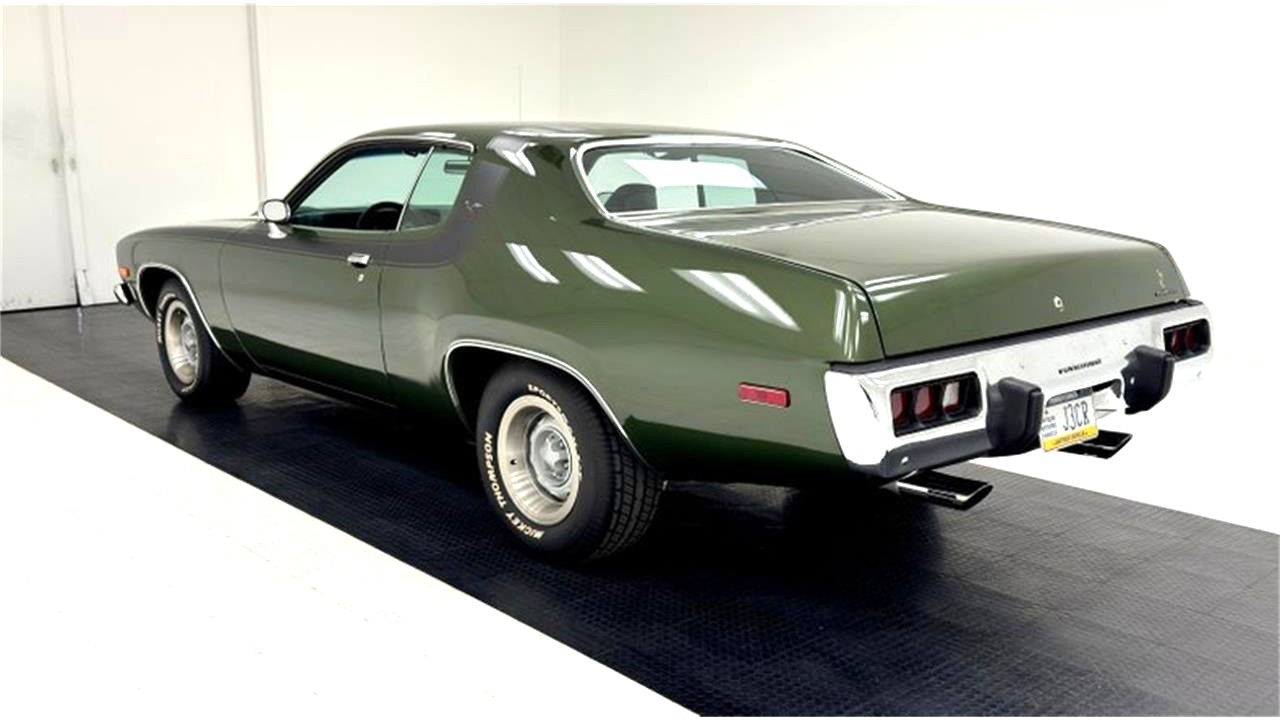
Road Runner production more than doubled for 1973, with 19,056 built. Of those, 749 U.S.-spec cars were built with the 440. This Forest Green metallic 1973 Plymouth Road Runner GTX was built in Windsor, Ontario, Canada but built to U.S. specs. Features include matching bucket seat interior (note the original condition), console, Tuff steering wheel, dual racing mirrors, 15-inch Rallye wheels, power front disc brakes, hood tie-down pins and inside release, chrome exhaust tips, AM radio, and more.
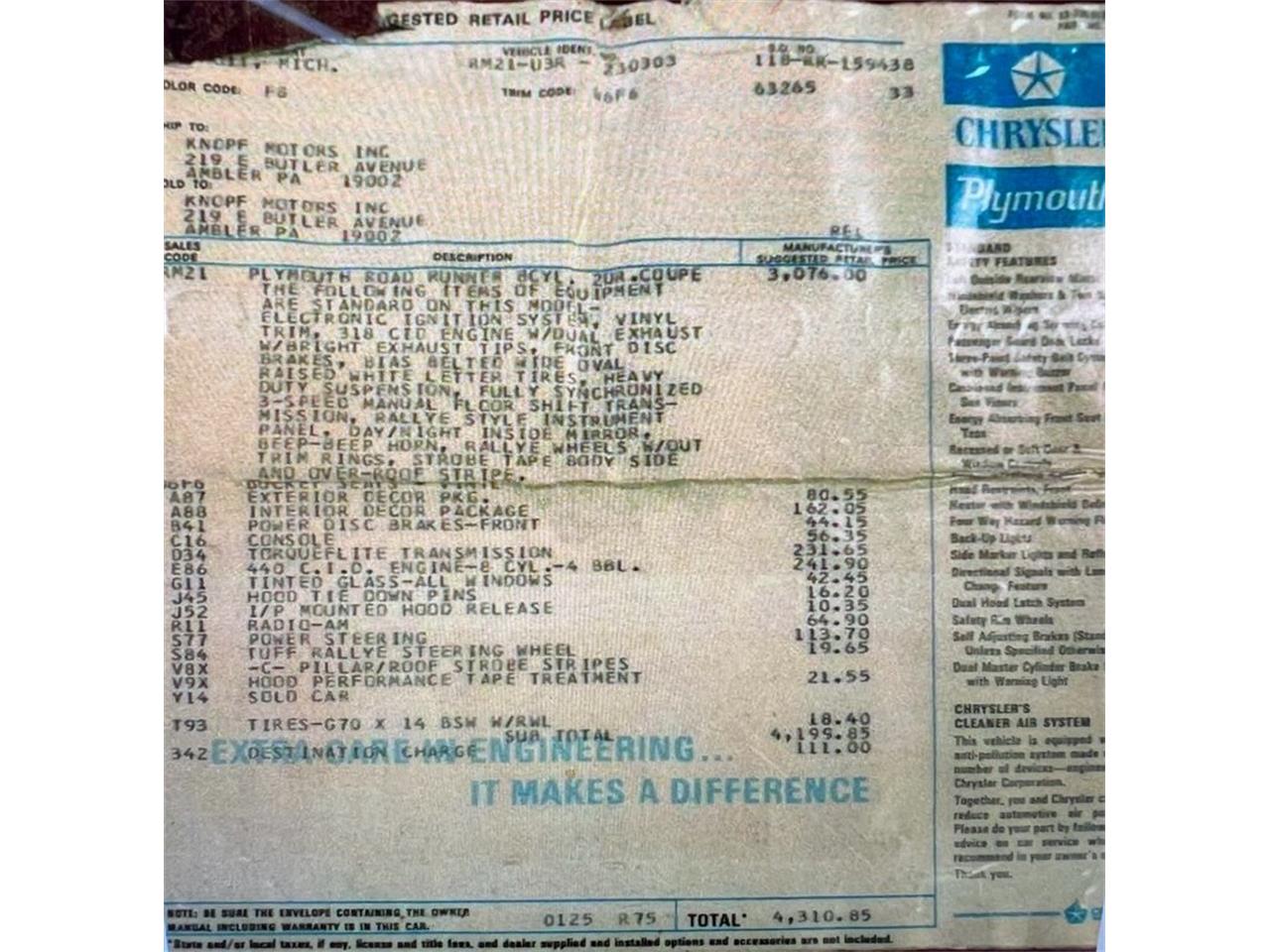
As this car was ordered with the 440, you’ll find GTX badges on the hood, but make no mistake—it identifies as a Road Runner. Buy it for $32,900 and you’ll identify as the guy or gal in the neighborhood with the hot car.
Click here to view this Pick of the Day on ClassicCars.com

